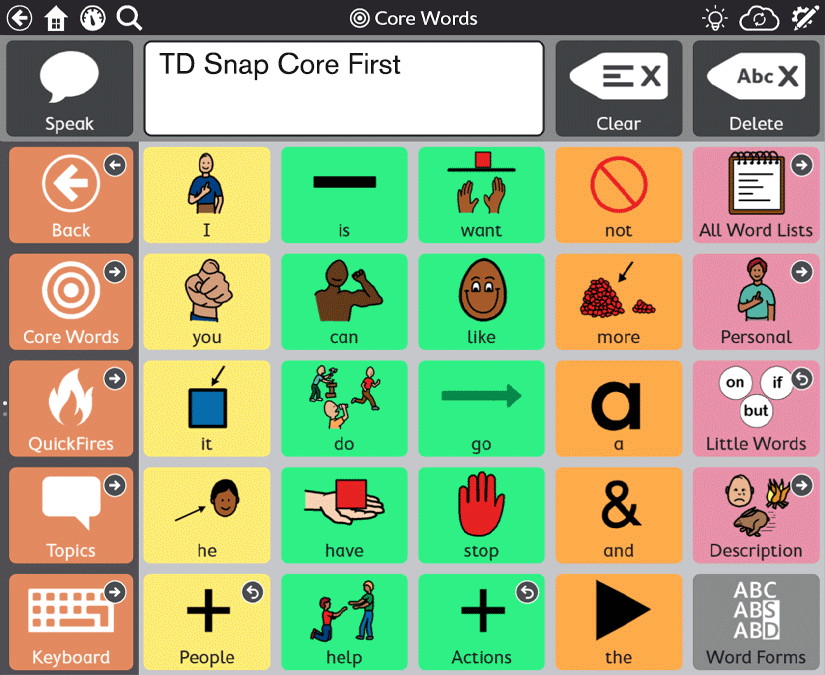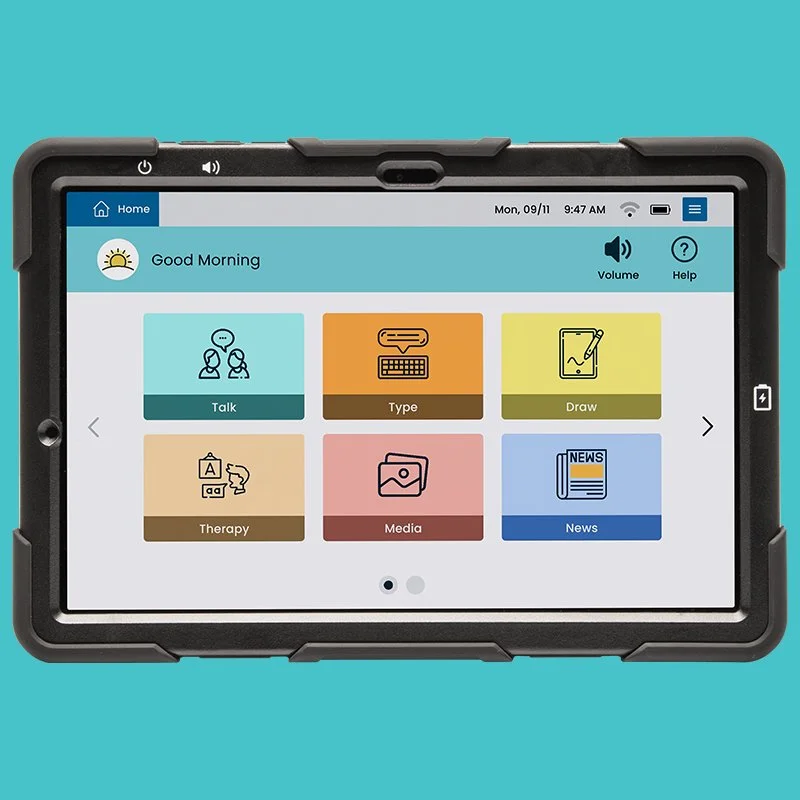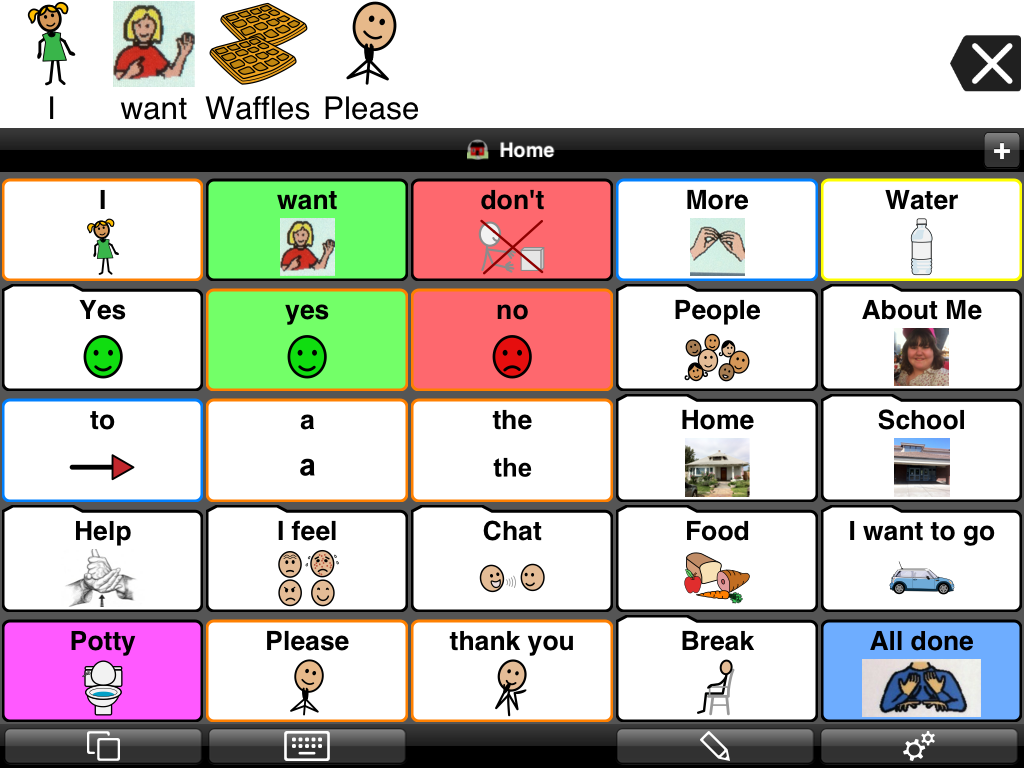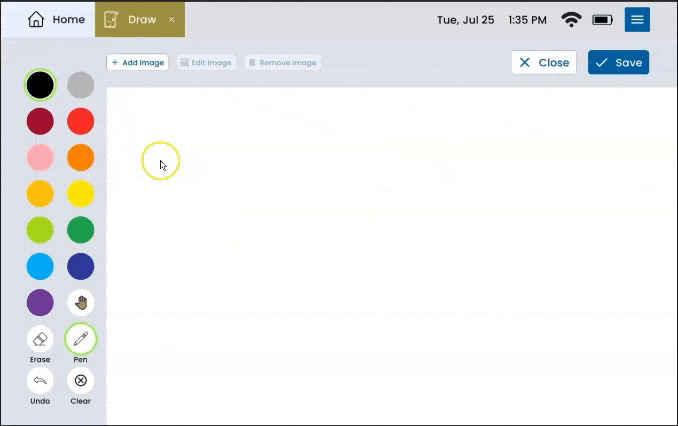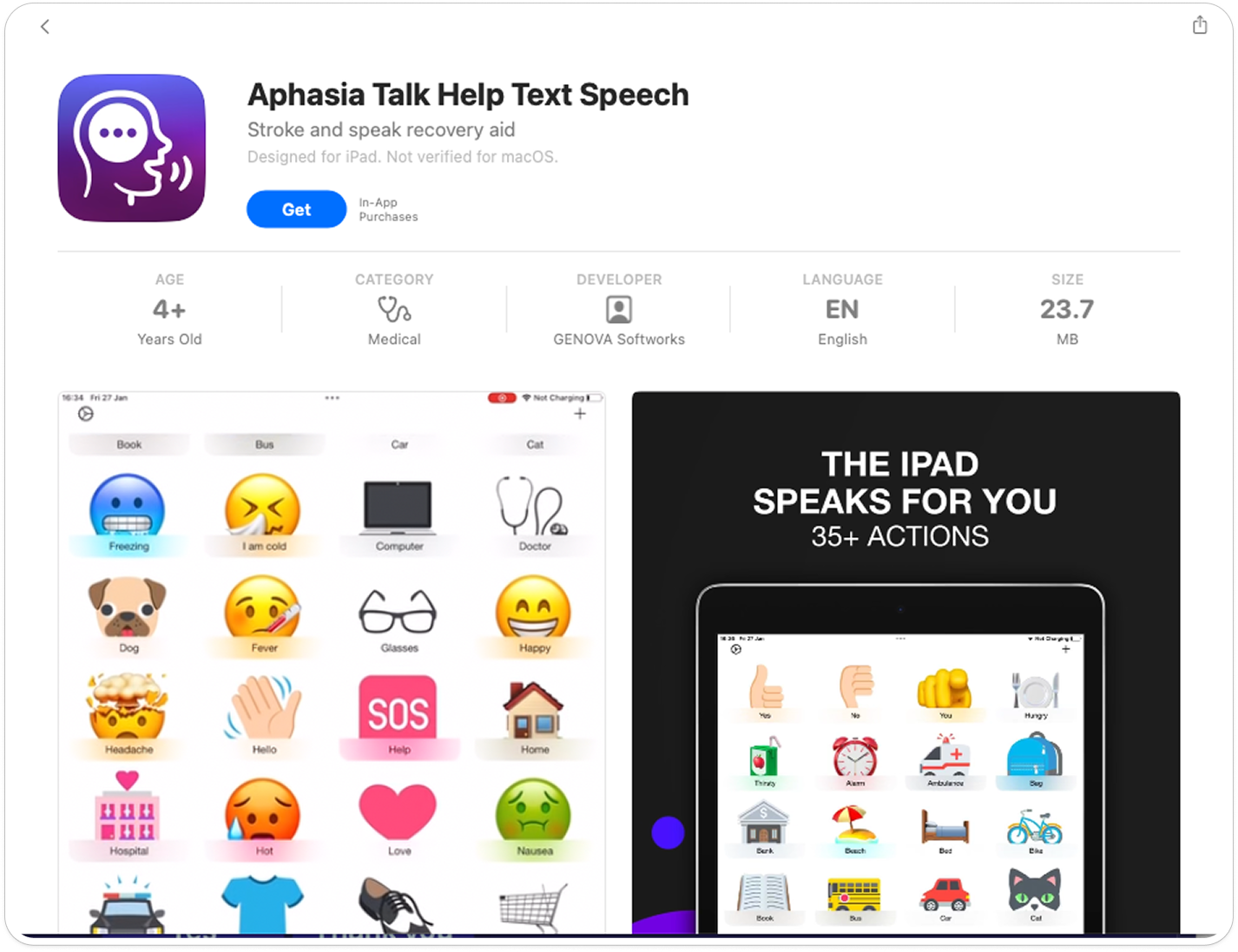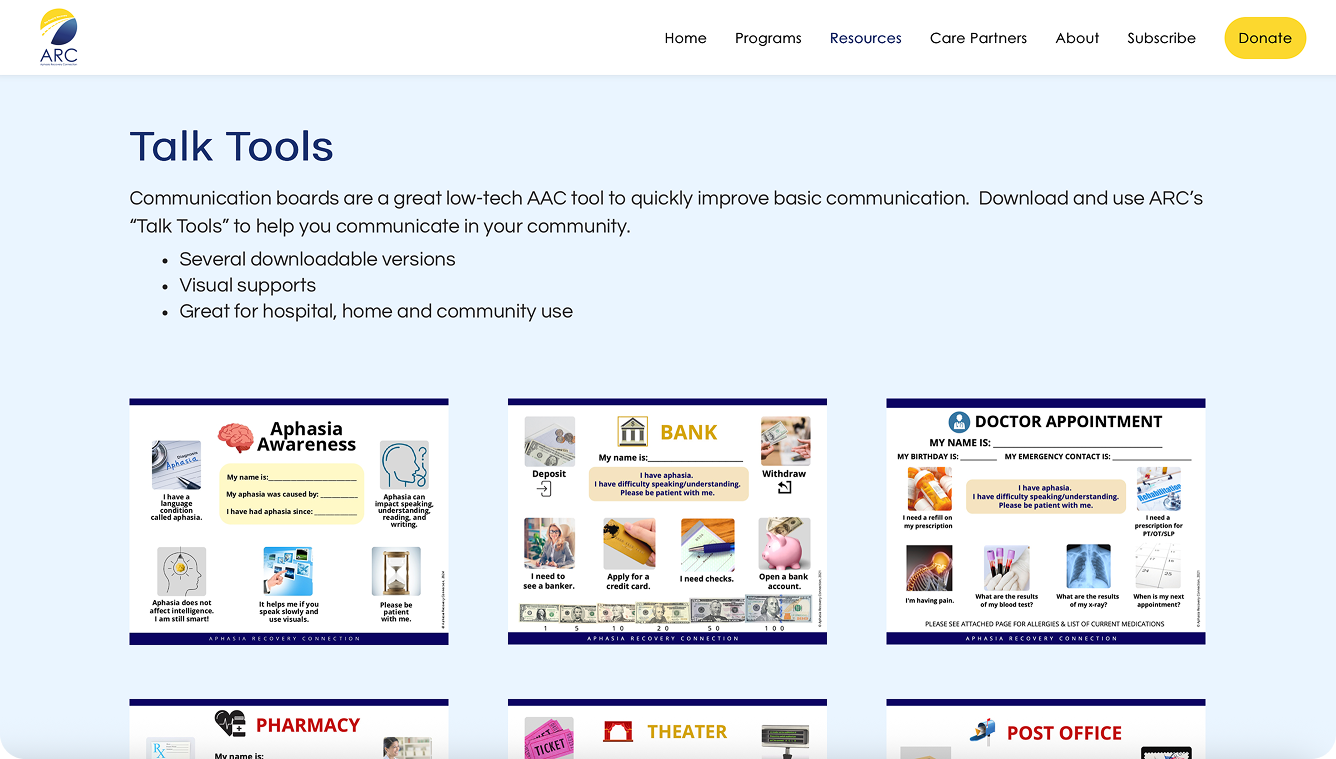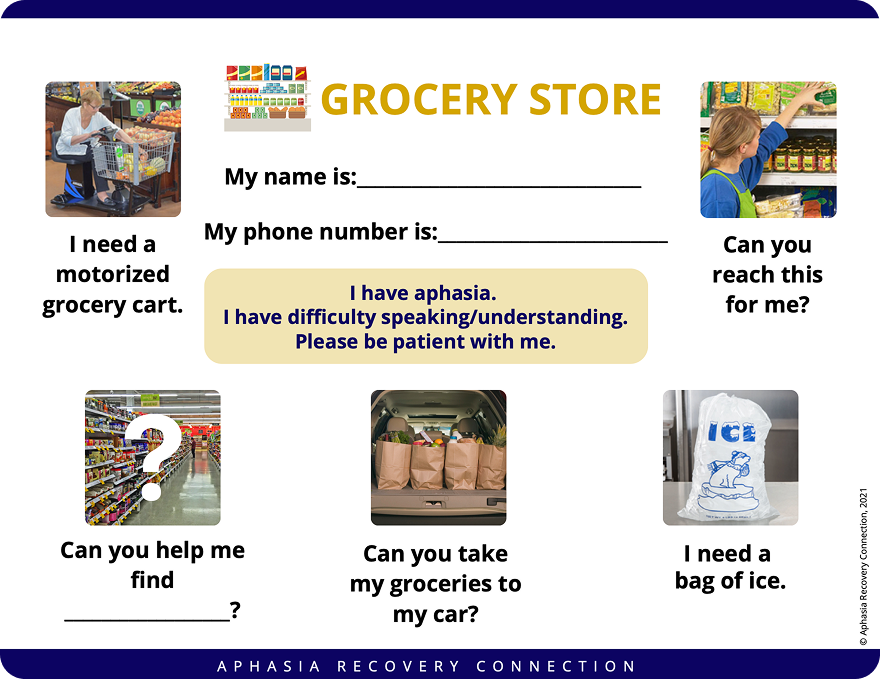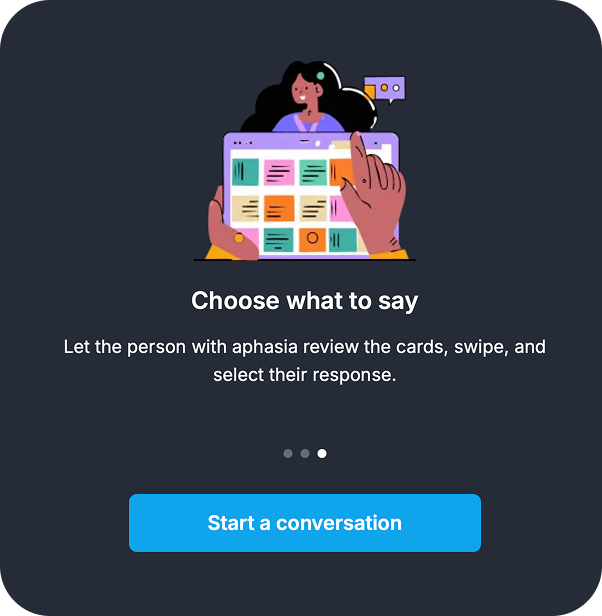AAC roundup: Tech for people with aphasia
There’s a lot out there. Here’s our take.
When it comes to AAC (Augmentative and Alternative Communication), there are a lot of options. It can get pretty overwhelming, especially if you’re new to the space and just starting to research. Even the Speech Language Pathologists we spoke with felt like the industry is fragmented, and different solutions may work (or partially work) for different people in different circumstances.
Given that, I’m highlighting just a few tools, grouped into the following categories:
🧩 Sentence builders
👩🔬 ChatGPT workarounds
🤖 Speech recognition
👩❤️👨 Expression and understanding
Before diving in, note that I haven’t included any solutions that could be described as “therapy” or “speech practice.” This is a slightly different kind of solution, where products step users through exercises designed to help them enunciate and produce words—essentially, the tech version of the worksheets and homework they do with their Speech Language Pathologists. I’ve read that the key to improvement is just lots of practice and repetition, so for that, apps like these can help fill the gaps between speech therapy sessions. They’re just slightly outside of the space we’re in, which is more around facilitating conversation and communication.
Also note there’s a library of tools published by aphasia.org under Resources & Support > Tools & Technology. From there, you have access to many different types of tools in their Software Finder. It’s a good place to start your search.
Aphasia.org’s Software Finder. Solutions are categorized by functionality/need.
Ok, let’s jump in.
🧩 Sentence builders
Sentence builders come in many shapes and sizes. This is probably what most people think of first when they imagine alternative communication apps. While it’s a pretty crowded space, they pretty much all look like a grid of icons with categories for a person to select from. From talking to Speech Language Pathologists and our own experience, it seems like the most prevalent/promoted solutions are:
tobii dynavox (TD Snap)
Lingraphica TouchTalk
Proloquo2Go
tobii dynavox (TD Snap)
Lingraphica TouchTalk
Proloquo2Go
It’s a lot to navigate, and in our opinion, they’re all kind of the same. Lingraphica has some interesting features on their website that include typing into a text box to speak, drawing, and selecting from media on your device (presumably your camera roll… see below). We haven’t personally explored these features, because my mom is still pretty limited in what she can type and draw, but they seem promising for some. Note that you can now achieve some very similar functionality using ChatGPT, particularly type-to-speak. More on that next.
Lingraphica has a feature that allows users to type messages and have them spoken aloud.
Lingraphica’s draw feature.
Lingraphica’s media feature, where users can swipe through their pictures to share their most recent experiences or reuse drawings for frequently used messages. We haven’t explored this feature, but as a workaround might suggest just opening the camera roll on your phone.
Speech Assistant AAC app
These grids of static icons are the industry standard. For many years, it’s been the only option. We’ve talked to many Speech Language Pathologists, and none of them gave these products a ringing endorsement. We get it.
One maybe lesser-known solution we like is called Speech Assistant AAC. It seems to do pretty much everything the “big names” do, without requiring people to purchase some kind of hardware, and without all the added features and complexity. I think this one is worth a shot.
👩🔬 ChatGPT workarounds
We’re an AI-first product, which just means it’s an essential part of the experience (not shoehorned in as an afterthought). I’d be remiss if I didn’t ask ChatGPT how to use other tools to achieve text-to-voice. Response below.
If you're looking to convert text to speech (TTS) so you can hear it spoken aloud, here are a few ways to do it, depending on what you want to use:
1. Use Built-in Tools on Your Device
Windows
Narrator (built-in screen reader):
Settings > Accessibility > NarratorMicrosoft Edge Read Aloud:
Right-click text > “Read aloud”
macOS
Highlight text > Right-click > "Speech" > "Start Speaking"
iPhone/iPad
Enable in
Settings > Accessibility > Spoken Content
Android
Enable in
Settings > Accessibility > Select to Speak
2. Use Online TTS Tools
You can paste your text and hear it spoken out loud:
ttsmp3.com
voicemaker.in
text-to-speech.online
Google Translate (paste text, click the speaker icon)
3. Use Browser Extensions
Read Aloud (Chrome/Edge/Firefox extension)
Natural Reader
Speechify
ChatGPT Voice Mode
ChatGPT also offers voice mode. It’s pretty incredible, particularly the voices (you get to pick which one you like the sound of best). Something to explore.
ChatGPT voice mode
Aphasia Talk Help Text Speech app
And finally, there’s an app that looks like it’s just dipping its toe in the AI waters with a sentence builder that includes predictive text/autocomplete. We couldn’t quite get it to work how we wanted, but it could be a feature to watch. Like some of the bigger names, it also has a canvas for drawing. Plus, it has emojis, which you know we’re a big fan of 🙂.
Aphasia Talk Help Text Speech
🤖 Speech recognition
Project Relate, Voiceitt
Even with AI and all of the technological advances, speech recognition is a hard code to crack. We published a blog post on what we mean by speech recognition, where you can find more details about what Google is up to in this space. Basically, big tech is working on ways to understand atypical speakers, caption their words, and translate them for people who aren’t as familiar with their unique form of speech. This is an ideal state.
In addition to Google’s Project Relate, there’s a solution called Voiceitt, which describes itself as technology that combines state-of-the-art machine learning techniques with a proprietary database of atypical speech patterns. I believe its aim is similar to that of Google’s, which is to decipher non-standard speech—in their case, for voice assistants to better understand spoken prompts.
Of course, this kind of solution only applies to people who can produce some speech. For people with severe apraxia, this probably won’t make sense.
Voiceitt’s app is designed to make it easier for people with non-standard speech to control their smart home devices.
👩❤️👨 Expression and understanding
ARC’s Talk Tools
The Aphasia Recovery Connection brings together the community of folks with aphasia, family, friends, and caregivers. They offer a non-tech solution on their website that keeps communication simple—printable sheets with topics categorized by situation.
Find them here: https://aphasiarecoveryconnection.org/talk-tools/
The Aphasia Recovery Connection has printable sheets under the Resources section of their website.
An example of one of the situation-based printable sheets on the ARC resources page. This is actually a great model for how to prompt Broca (start by telling it where you are, and a few options for what someone with aphasia might need or be trying to do). Broca can achieve a similar outcome to these printable sheets, but faster and more dynamically, with unlimited scenarios, options, and possibilities.
Email Smart Reply
Depending on your settings, you may see a few suggested replies to an email in your inbox. Gmail and Outlook both have this feature. It’s essentially doing for your email what Broca does for spoken conversation—skimming the content of the initial email, and suggesting context-based responses for you to choose from. These used to be easy to ignore, but have gotten increasingly more relevant with the advances made in AI. They’re a really good way for someone with aphasia to continue to leverage email to communicate and respond.
Google’s way of describing the auto-responses generated at the bottom of an email.
Based on your settings, you may see options like these at the bottom of an email. It gives users a way to reply with one click.
Broca AI Speech
And finally, Broca. I put us in the expression and understanding space, meaning our solution is intended to help facilitate connection—and help family members better understand. It’s designed to supplement and augment conversation, not replace speech.
Try it out and let us know what others are in this space—AI moves fast, and we expect the AAC industry to change with it.
Broca AI Speech
Analog honorable mention
Worksheets, workbooks, flashcards. There’s a lot out there. What I noticed about my mom’s recovery specifically is that she needs to practice blended sounds, not just the individual letters of the alphabet.
For that, I found this set of flashcards, which I am not in any way sponsored for recommending. It’s just something that’s working for us that I thought I’d feature here.



